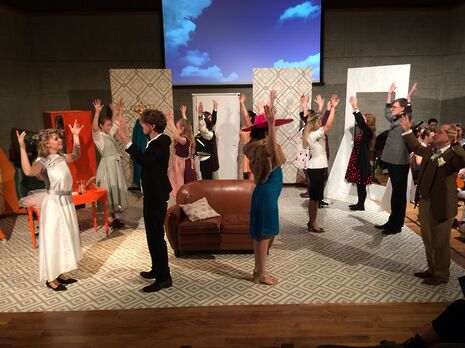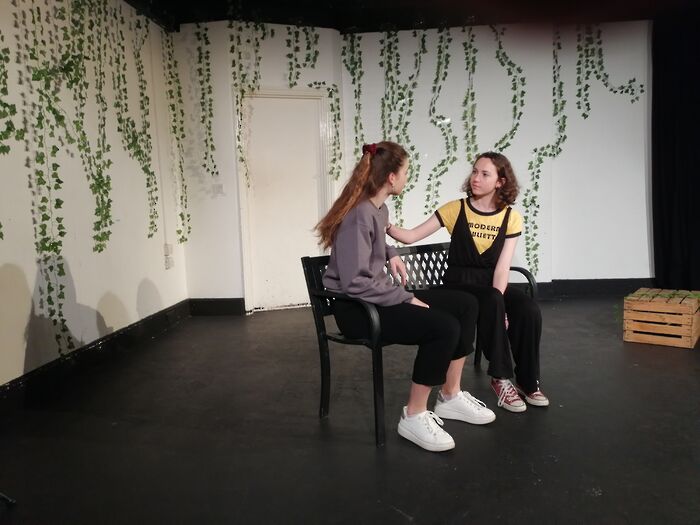The Marriage of Figaro review
An ambitious opera production that fell short musically

Mozart’s 1768 Le nozze di Figaro is perhaps one of classical opera’s best known and most joyous compositions. The farcical plot is coupled with a score which is both characteristically Mozartian in its ingenuity but somehow also distinct, marked out by its supreme lightness of touch. For those who are unfamiliar, the plot revolves around a ‘single day of madness’ (la folle journée) some years after the events of Le Barbier de Séville. As the title might suggest, it is the day of Figaro’s wedding, but it is no simple affair: with a few switched identities and accidentally overheard conversations, havoc is raised amongst both the servants and the aristocrats.
"Paul Schlesinger’s direction was pleasing on the whole, drawing out the wit of the libretto."
Unfortunately, Fitzwilliam Chamber Opera’s production created a little too much havoc. My overriding impression was that the choice of music was slightly beyond the reach of the resources available to this production. The practical necessity of reducing a full-size orchestral work for a 12-piece orchestra put a good deal of pressure on individuals, who after all, are not professionals. That being said, when you’re dealing with a score that’s so instantly recognisable, even minor errors can become distracting. This was a shame as the music certainly is challenging, and undoubtedly, if more rehearsal time had been available to them, they would have remedied some of the musical fumbles.
The casting was the source of further difficulties, the main problem being that the women out-sang the men, with the exception of Adrian Horsewood’s polished Count. Joe Folley had all the spirit of a good Figaro and appeared in his element striding around the stage and manoeuvring the other characters, but vocally he is not yet well-suited to the role. Folley sounds like he comes from a pop/rock musical theatre background and, this being his first operatic role, is noticeably lacking experience in the genre. That being said, he did have chemistry with his Susanna, the excellent Anna Wagner, who brought humour, warmth and vocal prowess to her role. She was well-cast opposite Lara Cosmetatos as the Countess, who, while perhaps a less experienced stage-performer, gave a dignified and well-sung performance. Similarly, Aisha Wheatley was a highlight, and the childlike quality of her Cherubino complemented her suitably sweet voice well.
Paul Schlesinger’s direction was pleasing on the whole, drawing out the wit of the libretto. While there were occasional moments which dragged (the action during the overture should either have been more engaging or simply discarded), Schlesinger’s direction was generally playful and fast-paced. Elements of his design seemed a little discordant, such as utilising the projection, but the 1950s setting was complemented by strong costume-design and the set itself worked well as a colourful, slightly minimalist solution to the various problems posed by the libretto (in particular the issue of the window to be jumped out of).
Clearly time and thought have gone into this production, which features many fine performers, but ultimately, I can’t help feeling that this project was simply too ambitious. Amateur theatre works best when repertoire is chosen based on the talent readily available, not the other way around. I would love to see a chamber opera staged by the same team, but over three hours of a fitfully enjoyable Figaro felt too long.
This is an updated version of a review that was published on 04/05/2019.
 Features / Should I stay or should I go? Cambridge students and alumni reflect on how their memories stay with them15 December 2025
Features / Should I stay or should I go? Cambridge students and alumni reflect on how their memories stay with them15 December 2025 News / Cambridge study finds students learn better with notes than AI13 December 2025
News / Cambridge study finds students learn better with notes than AI13 December 2025 News / Dons warn PM about Vet School closure16 December 2025
News / Dons warn PM about Vet School closure16 December 2025 News / News In Brief: Michaelmas marriages, monogamous mammals, and messaging manipulation15 December 2025
News / News In Brief: Michaelmas marriages, monogamous mammals, and messaging manipulation15 December 2025 Comment / The magic of an eight-week term15 December 2025
Comment / The magic of an eight-week term15 December 2025









